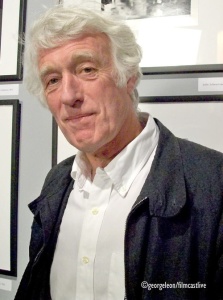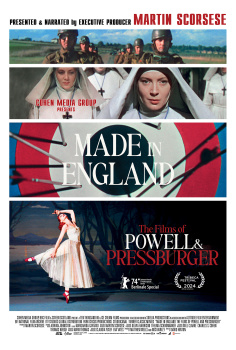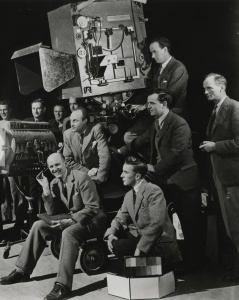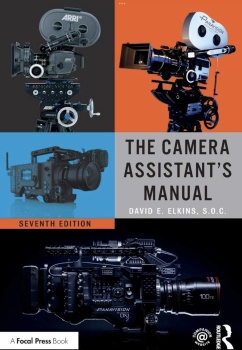CINEMATOGRAPHY IS CHANGING: VILMOS ZSIGMOND, ASC
We are all cinematographers now. Using any camera we can afford – Alexa, Red, Sony, Go Pro, iPhone - we are producing now myriads of images. But, is this a great time for cinematography?
Cinematographers
are hired for their taste, and taste is cultivated through their
experiences in life and knowledge and understanding of film, music, art,
literature, photography -- everything that helps to define and create a
unique point of view.
When
we go into pre-production on a project, we draw on all these
experiences to shape a look for the film. I feel this is often neglected
in pre-production, leaving the look to be achieved and refined in post.
There’s nothing wrong with post manipulation, especially as it can
often be more precise to adjust an image in a colorist’s suite than on
set. But these powerful tools do not mean we can curb our vision until
the post-production phase of a film. So much of the look is created by
the close collaboration between the director, production designer and
director of photography. For example, if the sets are painted the wrong
color with too much saturation to begin with, you’re already fighting a
losing battle when you get to color correction.
With
digital capture and even digital intermediates, it becomes very easy to
think of the image in the simplest of terms: contrast, saturation and
color bias. But I think too often we forget about texture and sharpness.
Film has organic grain texture that simply doesn’t exist in digital
cinematography. I’m not a film "purist" but I think it’s safe to say
that with the advent of radical advances in digital cinema technology
there has been a certain homogenization of the cinematographic image in
regard to look and texture. It is common to shoot for an evenly
distributed rich digital negative (protect the highlights, see into the
shadows) with plenty of sharpness to endure the color correction suite
and create the look in post. Everybody shoots the sensor the same way.
Painting
is a great influence on me. Whenever I can I go to museums and look at
the classics, the Dutch masters, Rembrandt and Georges de la Tour.
Looking at these old paintings can be inspiring. These are the basics
for cameramen because we can learn lighting from them. We can study the
classic paintings and try to use that technique of lighting in our
photography. I have lots of picture books at home – photography books
and art books. When we did McCabe and Mrs. Miller, I showed a book of
Andrew Wyeth's paintings to Bob Altman and said, “What do you think of
these faded, soft, pastel images?” And he liked it. Then I took the same
book to the lab and explained to them that this was what we were aiming
for. They understood right away why we were flashing the film. So it
helps; a picture is worth ten thousand words. A picture can immediately
tell you your feelings about something.
With
digital capture, we have been given a completely different set of
tools, trading physical lab processes for computer-driven
non-destructive techniques, creating possibilities for the image to be
pushed any way we wish in post. In a time when film is disappearing fast
and digital is making progress in image quality improvement, it has
become important for cinematographers to master these new tools.
Vilmos Zsigmond ASC, Frederick Gooodich ASC, Curtis Clark ASC & Alfonzo Beato ASC, ABC
“Kickstart
Theft” is a 7-minute movie-trailer/narrative short commissioned by Band
Pro Film & Digital. Frederic Goodich, ASC directed and I was
cinematographer. “Kickstart Theft” was premiered at IBC and Cinec.
The story is inspired by Vittorio de Sica’s neo-realist film Bicycle
Thieves (1948), shot in black-and-white on an Arriflex 2C by Carlo
Montuori. For “Kickstart Theft”, I used a Sony F65 for the first time,
with Leica Summilux-C primes and a Canon 30-300 zoom.We
wanted to work in available light as much as possible, and thanks to
digital technology we could use exposures even at low light levels of
less than a foot candle. There were times when my lightmeter didn’t even
register, and we rated the camera at 800 ISO. But
the quality of camera, quality of lenses, that’s almost secondary for
me. The lighting and composition are the most important things, as most
cinematographers know.
Camera
technology is just a medium, and media was, is and will be changing,
but an ability to create images that possess artistic and symbolic
qualities continues to be the major task of the cinematographer.
We
are faced with many changes in the complex world of technology but the
art of lighting, the art of camera movement, the art of color, tone and
composition are the basic tools of our profession.
How
to deal with the demands of the rapidly evolving new technology and yet
further the aesthetics of our filmic art? I suggest we must re-educate
and retrain ourselves creatively, to learn how to evaluate what we are
doing from the technical point of view while at the same time constantly
working to raise the standards of visual storytelling to ever-higher
levels.




























































